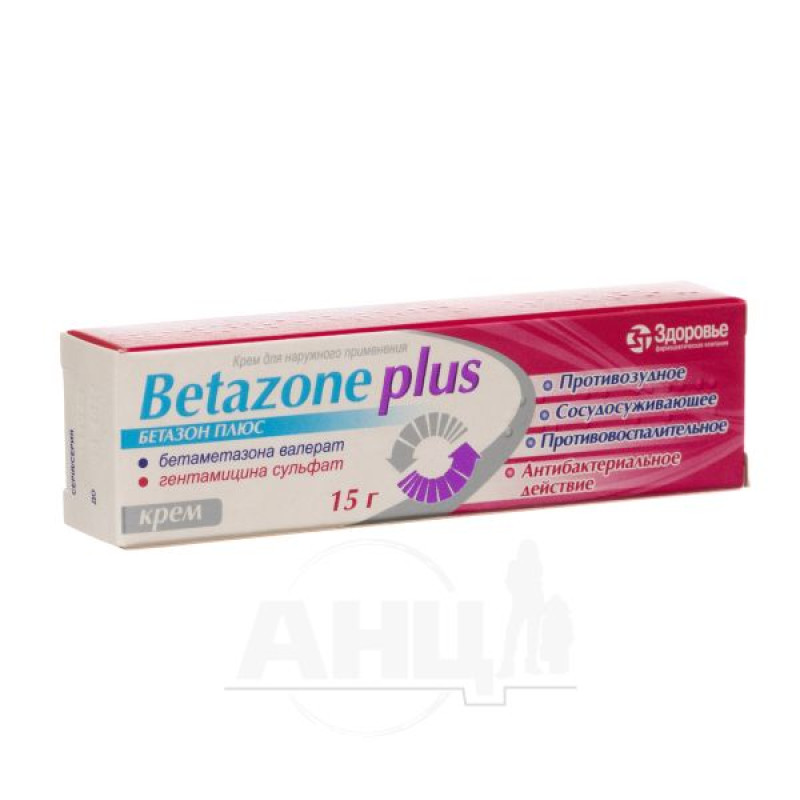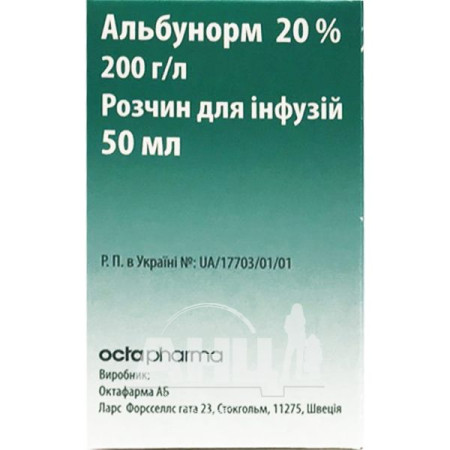betamethasone, gentamycin
Code: D07C C01
Dermatological products (D) composition:
active ingredients: betamethasone, gentamycin;
1 g of the drug contains betamethasone valerate micronized in terms of betamethasone 1 mg; gentamicin sulfate in terms of gentamicin 1 mg;
Excipients: cetostearyl alcohol, polyethylene glycol stearate, white soft paraffin, mineral oil, anhydrous sodium dihydrogen phosphate, concentrated phosphoric acid, sodium hydroxide, chlorocresol, purified water.
Dosage form.
Cream for external use.
Pharmacotherapeutic group.
Corticosteroids for use in dermatology. Corticosteroids in combination with antibiotics. Betamethasone and antibiotics.
PBX code D07С C01.
Clinical characteristics.
Indication.
Dermatoses that are amenable to treatment with glucocorticosteroids when complicated or suspected of being complicated by a secondary infection caused by microorganisms sensitive to gentamicin: eczema (atopic, infantile, coin-like), anogenital and senile pruritus, contact dermatitis, seborrheic dermatitis, neurodermatitis, intertriginous dermatitis, solar dermatitis, exfoliative dermatitis, stasis dermatitis and psoriasis.
Contraindication.
The drug is contraindicated in patients with hypersensitivity to the active substances or to any other component of the drug. It is also contraindicated in skin tuberculosis, skin manifestations of syphilis, skin reactions after vaccination, widespread plaque psoriasis, varicose veins, perioral dermatitis, rosacea, chickenpox, other bacterial and fungal skin infections without adequate antibacterial and antifungal therapy.
Method of administration and doses.
Adults and children over 12 years old - apply a thin layer of the cream to the entire affected area of the skin 2 times a day, morning and evening.
The frequency of application of the drug is determined individually depending on the severity of the disease. In mild cases, it is used once a day, in more severe lesions, more frequent application may be necessary.
The duration of treatment depends on the size and location of the disease, as well as the patient's response to treatment. However, if clinical improvement is not observed within 3-4 weeks, the diagnosis should be reconsidered.
Children from 2 to 12 years old - the cream is applied in a thin layer to the affected area of the skin 2 times a day, morning and evening. Less often it can be applied in mild forms of the disease. Application to the face, neck, scalp, genitals, anorectal area and skin folds is carried out according to the doctor's prescription. The duration of treatment should not exceed 10 days.
Adverse reactions.
During treatment with the drug, adverse reactions are observed very rarely and include increased sensitivity, rash and skin pigmentation.
Treatment with gentamicin may be accompanied by temporary skin irritation (erythema and itching), which usually does not require discontinuation of treatment.
When using topical corticosteroids under occlusive dressings, the following adverse reactions may occur: burning sensation, itching, irritation, dry skin, folliculitis, hypertrichosis, acneiform eruptions, hypopigmentation, perioral dermatitis and allergic contact dermatitis, skin maceration, secondary infection, skin atrophy, striae and prickly heat.
Overdose.
With prolonged or excessive use of local glucocorticosteroids, suppression of pituitary-adrenal function with the development of secondary adrenal insufficiency and the appearance of symptoms of hypercorticism, including Cushing's disease, is possible. A single overdose of gentamicin did not lead to the appearance of symptoms of overdose. Excessive or prolonged use of gentamicin may lead to overgrowth of microorganisms insensitive to the antibiotic.
Treatment. Appropriate symptomatic therapy is prescribed. Symptoms of acute hypercorticism are usually reversible. If necessary, correction of electrolyte balance is carried out. In case of chronic toxic effects, gradual withdrawal of corticosteroids is recommended. In case of excessive growth of resistant microorganisms, it is recommended to discontinue treatment with the drug and prescribe the necessary therapy.
Children: Not recommended for use in children under 2 years of age.
The use of this drug is possible only if the expected benefit exceeds the potential risk of adverse reactions. When using the drug in children, it is necessary to take into account the possible occurrence of signs of suppression of the hypothalamic-pituitary-adrenal system, which occur in children more often than in adult patients, which is associated with greater absorption of the drug in children due to a larger ratio of skin area to body weight.
In children receiving topical corticosteroids, adrenal suppression, Cushing's syndrome, growth retardation, insufficient weight gain, and increased intracranial pressure have been reported.
Manifestations of adrenal cortex suppression: low plasma cortisol levels and lack of response to the adrenal stimulation test with ACTH drugs. Increased intracranial pressure is manifested by fontanelle protrusion, headache, and bilateral optic disc edema.
Application features.
Betasone Plus is not intended for use in ophthalmology. If skin irritation or hypersensitivity develops during treatment with the drug, the drug should be discontinued and the patient should be given adequate therapy.
Any side effects that occur with systemic corticosteroids, including adrenal suppression, may also occur with topical glucocorticosteroids, especially in infants and children.
Cross-allergic reactions with aminoglycoside antibiotics have been observed.
Systemic absorption of topical glucocorticosteroids will be higher if treatment is carried out on large body surfaces or when occlusive dressings are used, as well as with prolonged treatment. Appropriate precautions should be taken in such cases, especially when treating infants and children.
Systemic absorption of gentamicin when applied topically may be higher when treating large body surfaces, especially with prolonged use or in the presence of skin lesions. In such cases, undesirable effects associated with systemic absorption of gentamicin may occur. Appropriate precautions are recommended in such cases, especially when treating infants and children.
Prolonged topical use of antibiotics may occasionally lead to the growth of resistant microflora, including fungi. In this case, as well as in the event of irritation, sensitization or superinfection, therapy should be discontinued and appropriate therapy should be instituted.
Ability to influence the reaction rate when driving vehicles or working with other mechanisms. Usually the drug does not affect the reaction rate when driving vehicles or working with other mechanisms.
Interaction with other drugs and other types of interactions.
Interaction unknown.
Pharmacological properties.
Pharmacodynamics. Betasone plus combines the long-lasting anti-inflammatory, antipruritic and vasoconstrictive effects of betamethasone valerate with the broad spectrum antibacterial activity of gentamicin sulfate. Active against Streptococci (group A beta-hemolytic, alpha-hemolytic), Staphylococcus aureus (coagulase-positive, coagulase-negative and some strains that produce penicillinase) and gram-negative bacteria: Pseudomonas aeruginosa, Aerobacter aerogenes, Escherichia coli, Proteus vulgaris and Klebsiella pneumoniae.
Pharmacokinetics: There are no data on the pharmacokinetics of the drug.
Pharmaceutical characteristics.
Main physicochemical properties: white cream, homogeneous consistency.
Expiration date.
2 years.
Storage conditions.
Store in the original packaging at a temperature not exceeding 25 °C.
Keep out of reach of children.
Packaging. Cream for external use, 15 g or 30 g in tubes in a box.
Release category: By prescription.






